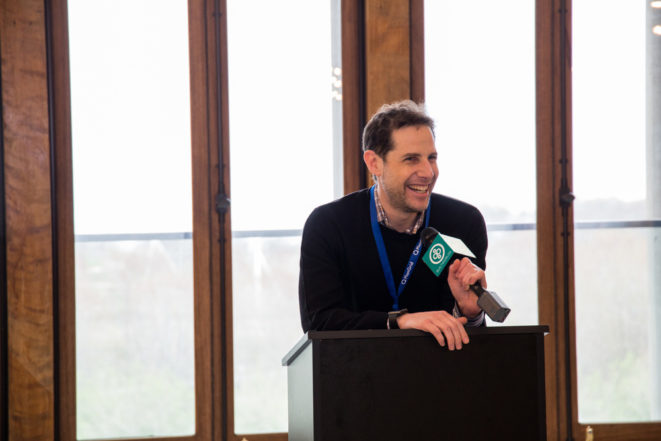
- Above, BuiltWorlds founder Matt Gray (left) welcomes the CTF crowd on opening night;
- Big data, small dollars invested wisely will disrupt to benefit both management and labor;
- Venture capital is still in search of new products and processes that can transform AEC.
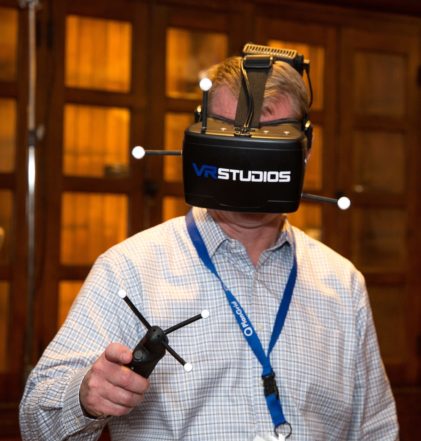
Drones, 3D printers, brick-laying robots, mobile apps, smart helmets, VR, AR, cloud collaboration, modular construction and more, all were on the menu at BuiltWorlds’ first-ever CEO Tech Forum (CTF), held April 20-22 at the reborn Chicago Athletic Association… which by wild coincidence was named “the best new hotel in the U.S.” on the first day of our event!
The tone of futuristic wonder was struck on the first night.
“This isn’t science fiction — everything that we have talked about tonight already exists and is already available,” said opening night keynote Stacy Scopano, senior industry strategy manager at Autodesk and definitely a ‘big picture’ guy.
- MCAA’s Technology Conference heads to Indianapolis June 6-7. Click here for details.
Near the end of his presentation, to drive home the point of how much technology already has changed our lives, and how seemingly endless and exponential new possibilities grow each day, Scopano showed a stunning slide and referred all the CEOs and tech leaders on hand to an article in Smithsonian from late 2013: Your Tweets Can Predict When You’ll Get the Flu.
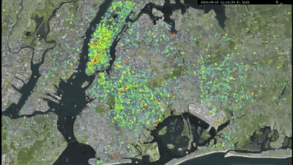
“Just by looking at geotagged tweets (at left), an algorithm can track the spread of the flu and then predict which users are going to get sick, and when,” he explained. “Ladies and gentlemen, that is ‘Big Data’.”
Scopano urged the audience to consider the enormous potential of such predictive analytics to make our industry not just more profitable and efficient, but much safer, too. “We still lose three guys a day on projects across the U.S.,” he said, pointing to an important new study on Building a Safety Culture, available here.
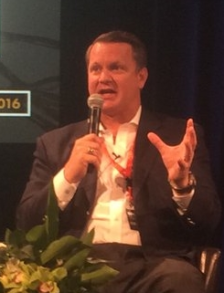
This cross-pollination of technologies from one industry to the next may have been the most promising thread that ran through the conference, encouraging attendees not only to look beyond their respective disciplinary silos of contracting, subcontracting, design and development, but even beyond the built environment, itself.
- Read Part 1: Behold! CTF points way forward, here;
- Read Part 2: Extra! Extra! CTF makes news, here.
“Just as NASCAR helped the auto industry learn how to improve tires and safety and engine performance, game engines have brought us high-performance renderings for better building,” said Brian Vowinkel, chief revenue officer for VRstudios, Bellevue WA. “So, we can offer a full-immersion experience that allows you to walk through a space before it’s built and have a discussion with the architect, engineer, sub, or whomever. Even Navy Seals and the U.S. Marines are using VR now in training to minimize risk,” noted Vowinkel, himself a West Point graduate and retired U.S. Army Ranger. Before and after both of CTF’s two evening keynote events, VRstudios ran demonstrations that allowed attendees to walk virtually through a high-rise apartment in downtown Seattle. (To see the demo for yourself, click here.)
“We are right at the tipping point of so much new tech adoption”
“There are also strong similarities between the construction and aerospace industries,” added Curtis Rodgers, VP of Brick & Mortar Ventures, a San Francisco-based venture capital firm started by Darren Bechtel, a fourth-generation scion of global contractor, The Bechtel Group. “So we are particularly interested in someone like Boeing‘s take on construction,” added Rodgers. “Everybody understands that technology and innovation are not an option anymore.”
__________________________________________________________________
- BW thanks CTF sponsors NoteVault, Sage, Penta, Ozinga, Burnham, Zebra, Newforma, CAT, FieldLens, MCAA, PlanGrid, Procore, ATCO, Graycor, Autodesk BIM 360, and Hard Hat Hub.
__________________________________________________________________
That message seems to be getting through to more and more owners, both public and private. “We are right at the tipping point now of so much new tech adoption,” noted George White, CEO and co-founder of Pavia Systems, a Seattle-based tech provider focused on improving transportation infrastructure. Toward that end, 11-year-old Pavia offers what it claims is “the only untethered, multi-user, multi-site, VR system available” in the AEC industry. At CTF, Pavia was promoting HeadLight, a software system built with real-time direct input from field project inspectors.
- Below, view our select gallery of CTF images. Much more to come, plus beaucoup video…
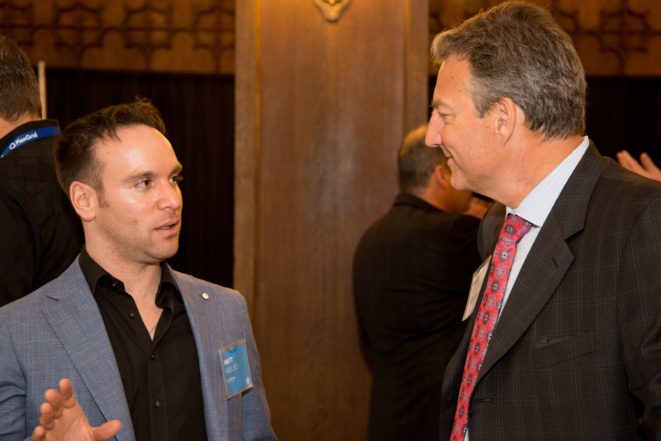
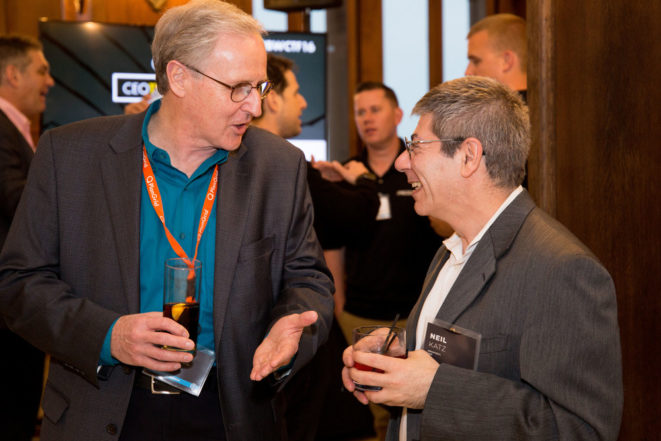
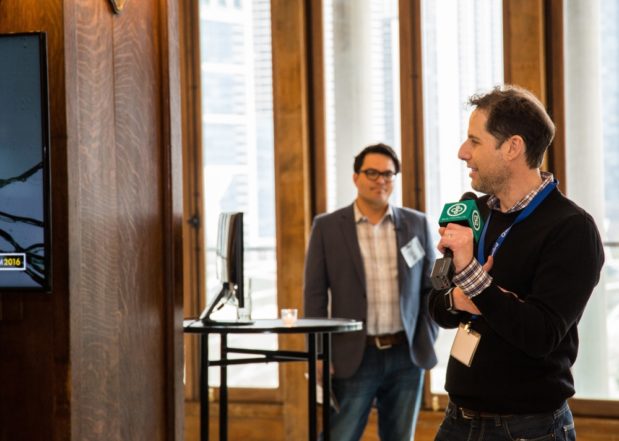
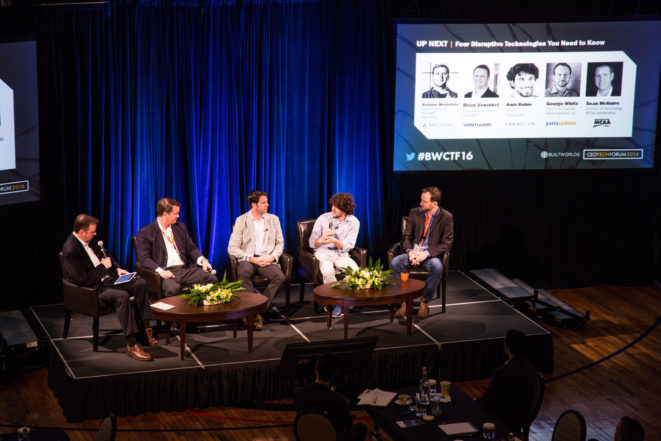
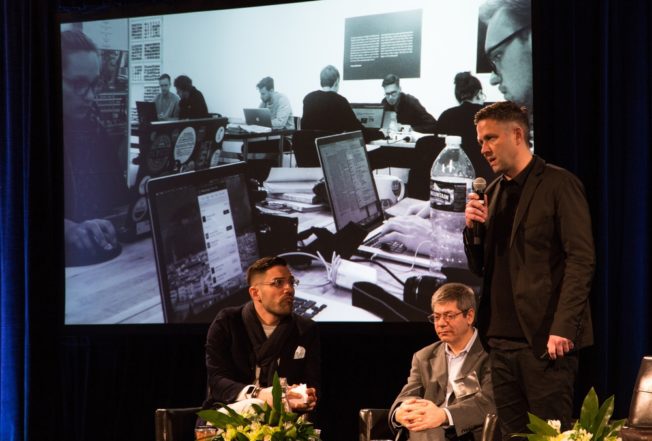
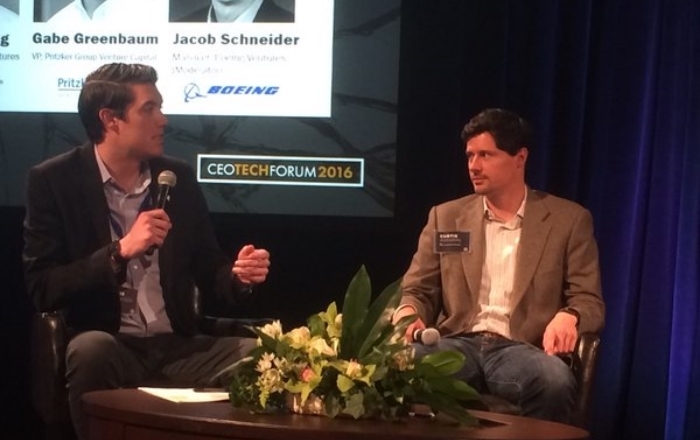
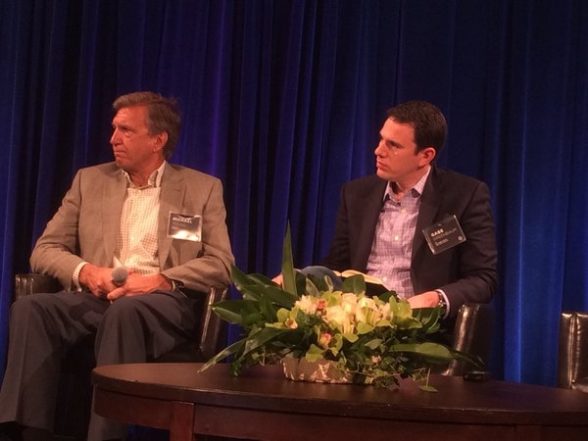
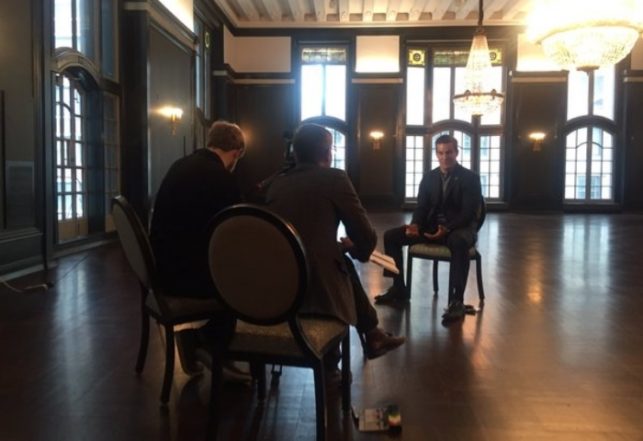
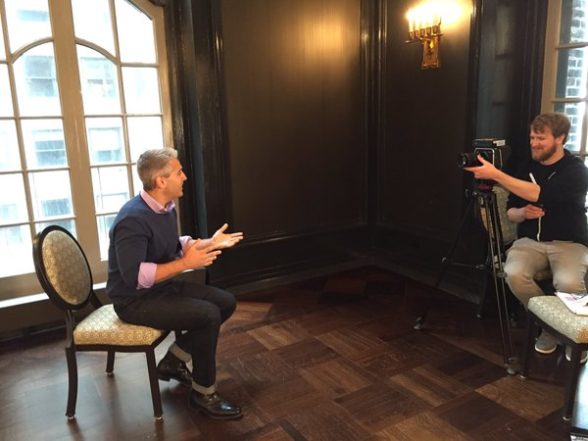
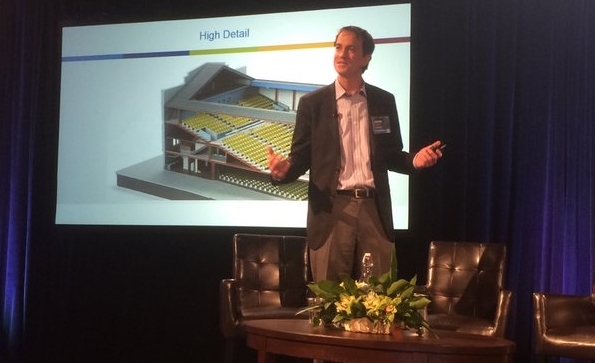
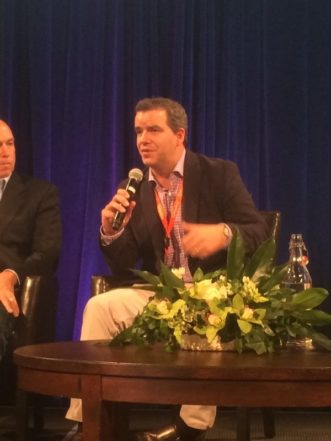
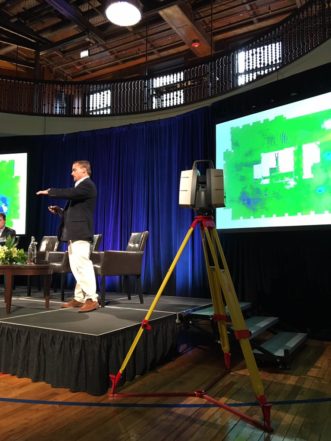
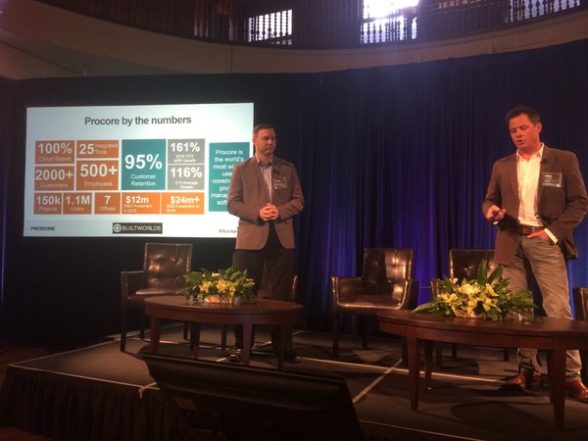
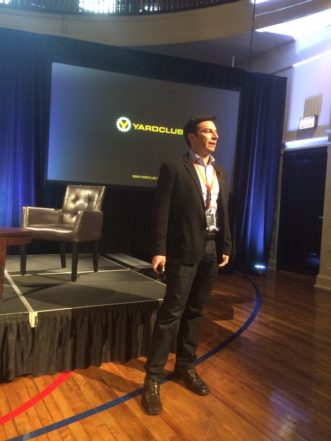
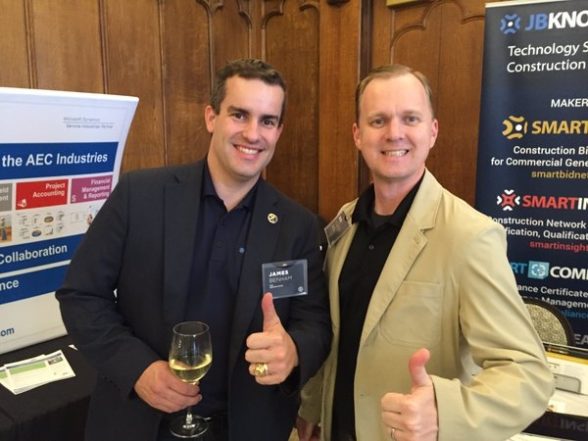
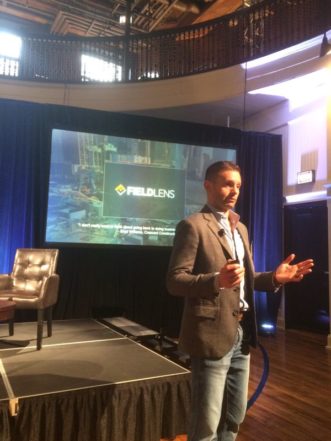
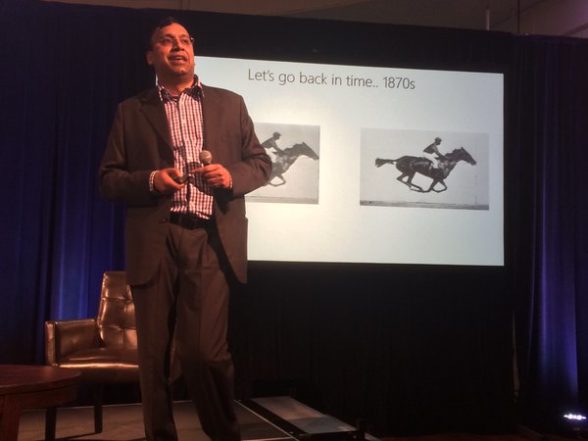
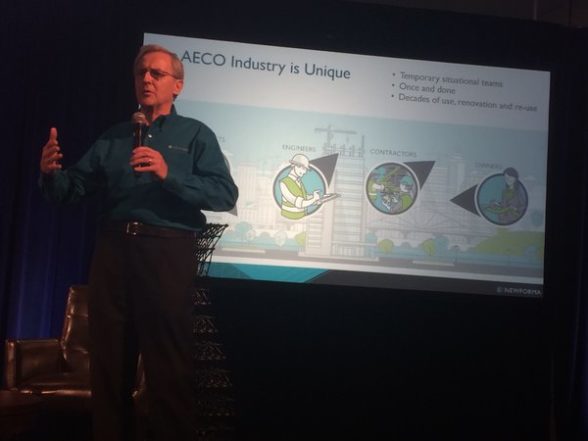
- For those of you just learning about BW, we also debuted this new video at CTF…
WHAT They said…
So many memorable things were said or shown by so many CTF panelists and attendees that we offer this unscientific selection of many that stood out. For the inspiring comments from our main conference keynote Peter Diamandis, check out Part 1 of this recap series. If there is an insight or highlight that we’ve missed, please let us know. And stay tuned for upcoming video highlights…
BE decisive
As moderator of our Incubating Innovation panel, TechNexus founder Terry Howerton advised his fellow CEOs to be both more decisive and more experimental. That way, the company keeps generating fresh ideas, even if all of them don’t take root. “If somebody comes to you with a new idea, just say ‘No’, or fund a pilot,” he said. The worst answer is to perpetually put off decisions.
People, Get Ready
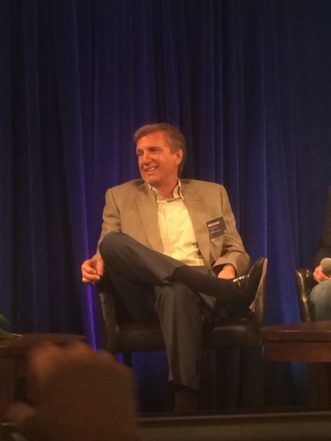
“Everyone on job sites will have a smart hard hat some time soon, even if it’s to rent, not own,” predicted Michael Young, director of Caterpillar Ventures, the innovation VC arm of the global construction equipment giant. Whether it comes in the form of a DAQRI Smart Helmet, or a GuardHat, a Microsoft Hololens attachment, or some other competitor product, Young believes there will be a commercially available smart hard hat “available by the end of the year.”
Eyes in the sky
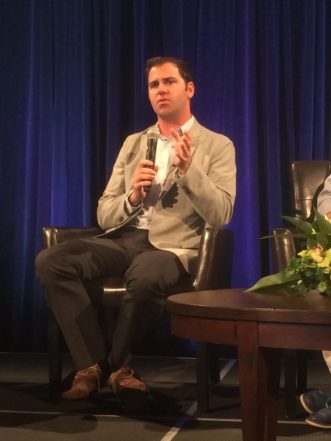
“Skycatch has always been about the data and not the drone,” said Brandon Montellato, sales engineering manager for the San Francisco-based UAV manufacturer. Last November, Autodesk announced that it was investing in Skycatch “to accelerate the development and adoption of reality capture for our customers across the AEC.” Skycatch drones now collect aerial data about job sites, and Autodesk ReCap 360 software processes the information so engineers, architects, BIM managers, and others can use it in their design, workflow, and collaboration processes. “Our technology acts as a bird dog, and we’re looking for the technology now to incorporate more tasks for on-demand data capture,” Montellato added.
Contractor’s Perspective
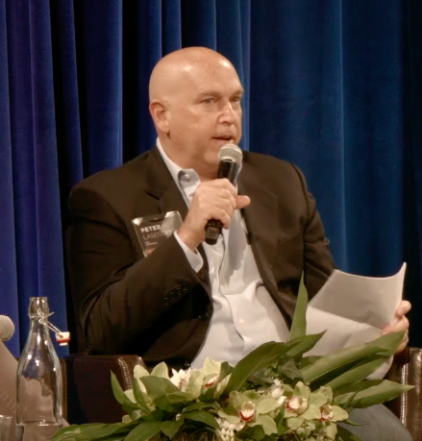
A former contractor, himself, NoteVault CEO Peter Lasensky asked for a show of hands to see how many in the audience were contractors. Several responded. He then asked, “How many of you here have ever had to write a check for something that you should not have had to pay for?” Most nodded their heads. That really is the rub of why NoteVault came to be, he said. Documentation is the key to avoiding having to write that check. “In the old days, the daily report was really the Bible of the project, but it was still woefully inadequate,” said Lasensky. “Our cloud-based reporting system allows users to just ‘call in’ notes verbally into their phone. Then they’re transcribed and automatically e-mailed, with photos, as a PDF Daily Report to project stakeholders.” The result is both more thorough and more accurate, he added.
OPEN MINDS
“It was really inspiring to see so many leaders in the construction industry here willing to listen to entrepreneurs who are passionate about both questioning — and changing — the status quo,” said Chase McWhorter, managing partner of Cedar+Mac, a 3D laser scanning firm based in Scottsdale AZ. After presenting, McWhorter noted that he had brought $100K-worth of scanning equipment with him for his CTF demo. While in town, he and a colleague performed a 3D laser scan of the CTF meeting space, promising to share them with BW some time this month. (Stay tuned.)
Got Disruption?
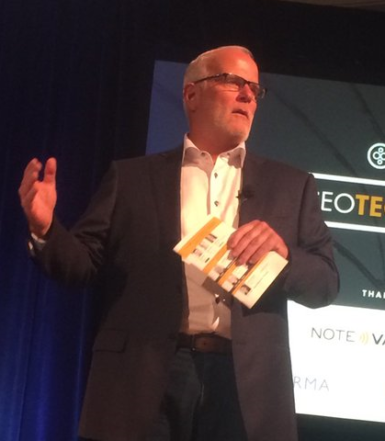
BW advisor and CTF organizing chair Paul Belair encouraged attendees to invest in trial and error, and avoid complacency. “If you allocated $5,000 per quarter, assembled a small team and performed a pilot, and then had that team come back to you afterward, saying, ‘Here’s what we have and this is how it can be disruptive,’ you could become another Amazon or Uber,” said Belair, CEO of 10X CEO Coaching, LLC. “If you don’t do that, then that’s how you can become disrupted. So, no matter what, just keep experimenting,” he urged the crowd of decision-makers.
Raising their game
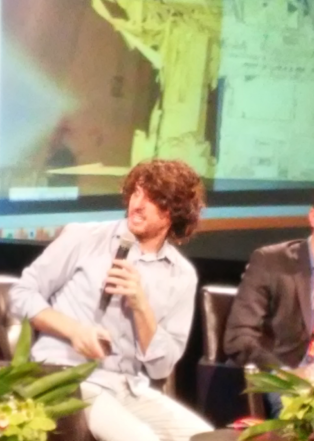
Gainesville FL-based Paracosm provides 3D mapping with hand-held laser scanners. Users can simply call up scanning apps on their tablets and quickly scan areas, as needed. The goal is “to 3D-ify the world and blur the lines between human and machine perception,” according to the firm mission statement. CEO Amir Rubin (who calls himself ‘chief parakeet’) believes the result will also mean higher quality. “3D-mapping and AR will bring new levels of quality control to work sites,” he said. “Stakeholders will be able to visualize and verify work in place throughout the project lifecycle to ensure safety on the job site, and that the as-built matches the design.”
An innovation agency
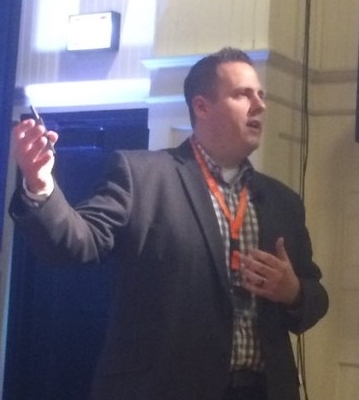
“We’re not a tech company per se, but we’re out there, looking for customer solutions,” said Jake Hamann, CEO of OneFire, which calls itself “an innovation agency.” Based in Peoria IL, also the home of Caterpillar, Hamann’s former employer, OneFire seeks to “solve problems in ways to benefit others,” he says. Cat has doubled down on innovation in recent years, so OneFire has built touchscreen displays, calculation tools, AR/VR apps, and web sites. It has created more than 600 3-D models for Cat as part of its Market-Ready Geometry initiative.
An idea grows in brooklyn
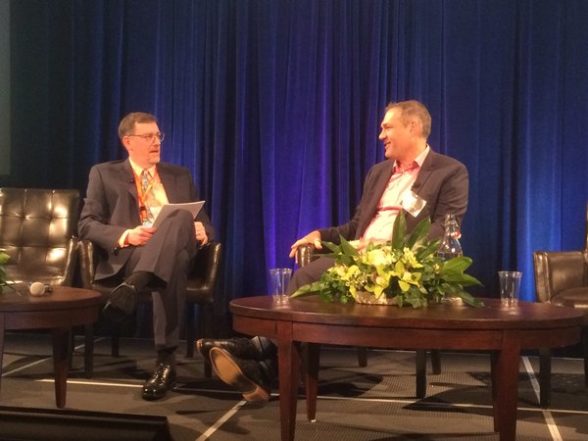
“I really think we are looking at a paradigm shift now,” said Roger Krulak, former SVP with Forest City Ratner Cos., developer of B2BKLYN, a 32-story, multifamily, modular high-rise in Brooklyn NY that has overcome myriad challenges to be set to finish this summer and start receiving tenants this fall. “The decision to go modular came out of the great volatility of the market in 2007-08 tied to the recession. As developers, we were confronted with the challenge of how to develop pro forma in the midst of unpredictable costs, which in NYC already are the highest of anywhere,” recalled Krulak, now CEO of RSK Modular, a firm he started last year.
- To hear the #ConTechTrio interview FieldLens CEO Doug Chambers, click here.
So, FCRC decided to go modular, aiming to build as much as 90% of B2 in an offsite factory. Since the building trades then already faced steep job cuts due to the economic downturn, the unions also signed on, agreeing to build, transport, and install the mod pods. So why the bad press? “Well, the problem was we were trying to do two things at same time: build a modular high rise and establish a separate enterprise with the project’s contractor (Skanska) to fabricate the modules,” Krulak explained candidly. When the latter went south, work on the former shut down. But the process, itself, was never the problem, he noted. “Everything stacks up, everything works,” he added. And soon, everything will be done, too. For BW’s full project story, click here.
From Australia to Gary
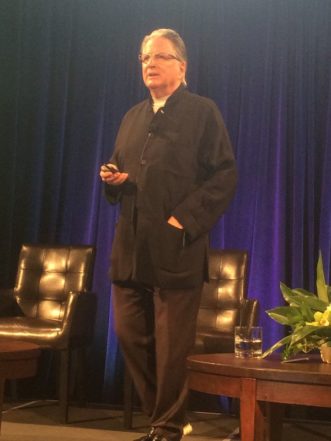
In our SmartWorlds session entitled, Urgent Optimism for Solving Growing Urban Challenges, BW advisors, big thinkers, and new business partners Paul Doherty and Peter Ellis presented jointly despite being separated by thousands of miles. With Doherty in China and Ellis on stage in Chicago, the pair respectively talked about two vastly different, but not entirely disconnected projects: the ambitious expansion of the Australian settlement; and the potential rebirth of the sad, Rust Belt ruin, Gary IN. Both efforts are driven by the looming explosion of nearby urban populations, and the need to utilize available assets that can no longer go untapped.
Doherty, CEO of The Digit Group, announced for the first time publicly that his firm is now working on perhaps the largest, most ambitious infrastructure project in the world, “the rebalancing of the Australian settlement,” he said via ‘live’ video feed from overseas. “It will involve high-speed rail and eight new smart cities on the continent. The plan includes a 543-mi rail link between Melbourne and Sidney,” noted Doherty.
“We are going to create nine million jobs in Australia… (and build) the world’s first distributed solar-powered street furniture”
Work would involve all manner of smart infrastructure for renewable energy, waste, roads, bridges, automated vehicles, even “the world’s first distributed solar-powered street furniture!” he added. “We’e going to create 9 million jobs in Australia,” Doherty claimed.
Regarding Gary, IN, the dream is no less compelling, though still a long shot. In fact, Ellis was even prohibited from sharing too many details of the not-yet-certain project. But he still was able to convey real optimism about reclaiming a once-vital steel town that may yet have a Second Act as a bedroom community for the sprawling Chicago metroplex. “We were somewhat stunned to find that with proper rail upgrades and other infrastructure support that we could get the commute time down to just 35 minutes from downtown to downtown,” said Ellis. The public-private exploration is currently being led by an investment group headed by former Chicago Mayor Richard M. Daley. “Every street in Gary currently floods,” noted Ellis. “But we can incorporate greenery throughout the city to capture stormwater and create truly green infrastructure.”
Stay tuned for more details from Gary this spring, said both Ellis and Doherty.
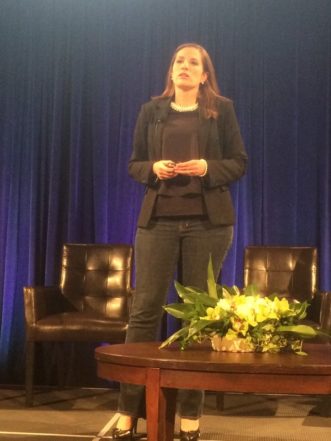
Disrupt yourself
As closing keynote, VIATechnik Founder and President Danielle Dy Buncio reminded the audience of how our industry is perceived by those outside of it, and one big reason is how reluctant the AEC community is still perceived to be to adapt new technology. “Studies still show that construction lags virtually all other industries in productivity, and by a large gap,” she said, noting that her VDC firm has seen the proof first-hand. “Some say safety issues are to blame, but manufacturing has safety issues, and it’s not lagging,” she said, noting that lessons in our industry need to be taken from one job to the next. “People say every project is unique, but what about all of the common practices we can take from project to project to improve productivity?” she asked.
Dy Buncio’s main message, however, was for companies and their CEOs to think longer term and to be creative. “Remember that Motorola at one point said publicly that ‘Cell phones are a niche market’,” she said, referencing the once-great telecommunications titan that ceased operations in 2011. “Granted, it’s hard to glimpse the future,” she said, but CEOs still need to try. “Join the party,” she urged. “Don’t become disrupted. Disrupt yourself.”
I robot… You?
As inspiring and motivational as Dy Buncio was in her talk, one comment that also lingers was offered by Construction Robotics co-founder Scott Peters. “I recently overheard a younger worker on a job site talking to an older foreman, asking him if he had seen the brick-laying robot (that Peter’s firm sells) in action? ‘Those things are going to take our jobs,’ the older man said. To which his young colleague replied, ‘No, they can help us,'” recalled Peters.
Indeed, for an industry now staring at a towering backlog of infrastructure projects that need to be built, rebuilt, expanded, renovated, refurbished, and/or re-imagined, it seems safe to say that CEOs and superintendents, alike, would agree that we will need all the help we can get.
__________________________________________________________
BW’s Josh Luber and Eliot Rosenfield also contributed photography to this story.
_______________________________________
Stay tuned for additional CTF coverage, as more stories and video highlights are posted.
__________________________________________________________
Don’t forget to sign up for next year’s CEO Tech Summit, tentatively set for Spring 2017. For more details, including Early Bird Registration deals and discounts, click here.

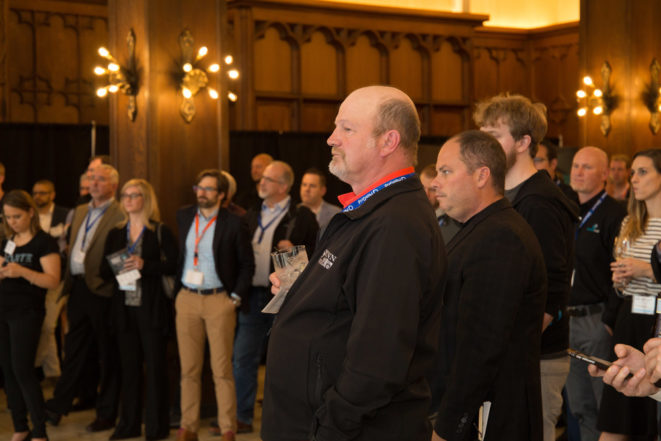
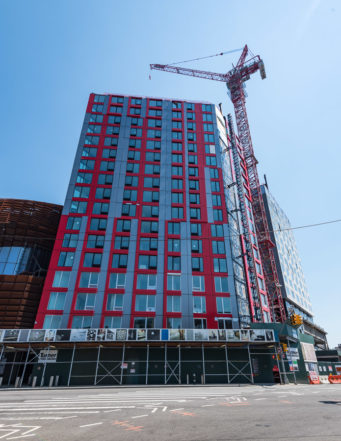
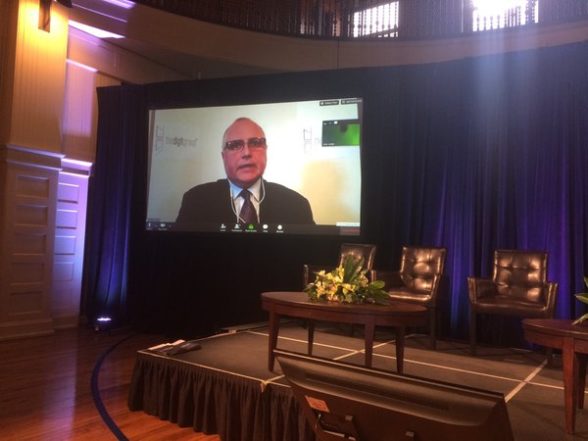
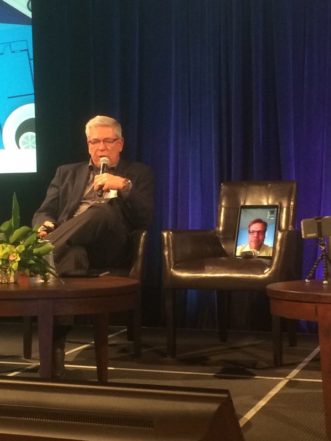



Discussion
Be the first to leave a comment.
You must be a member of the BuiltWorlds community to join the discussion.